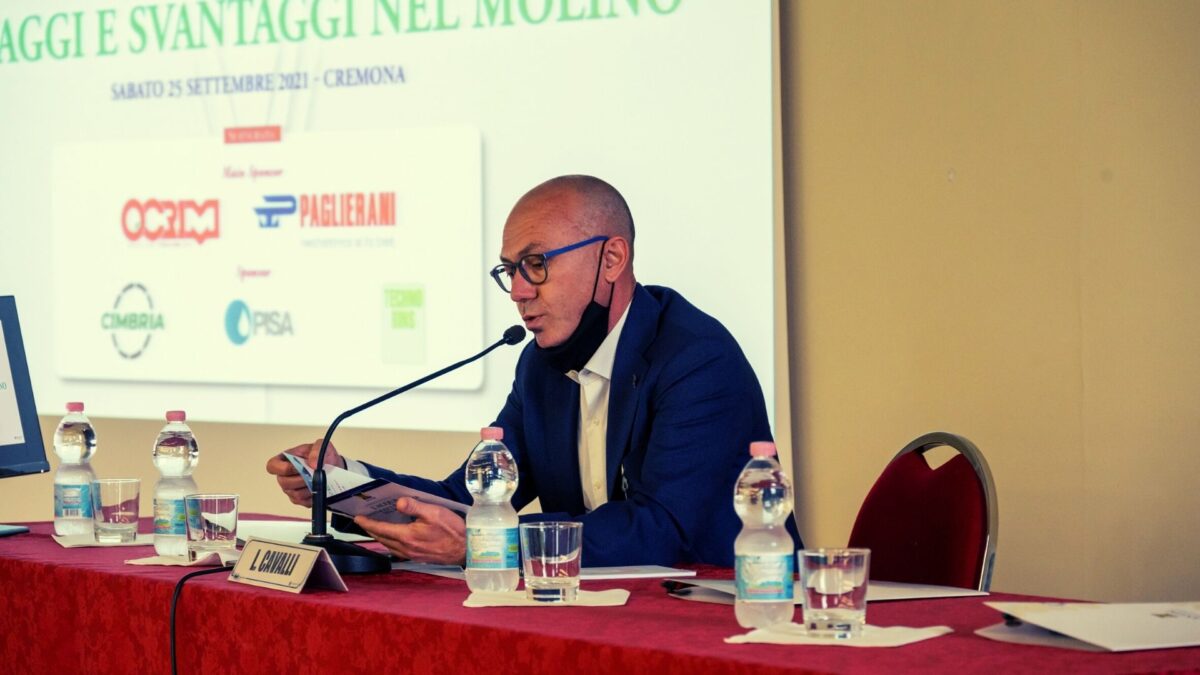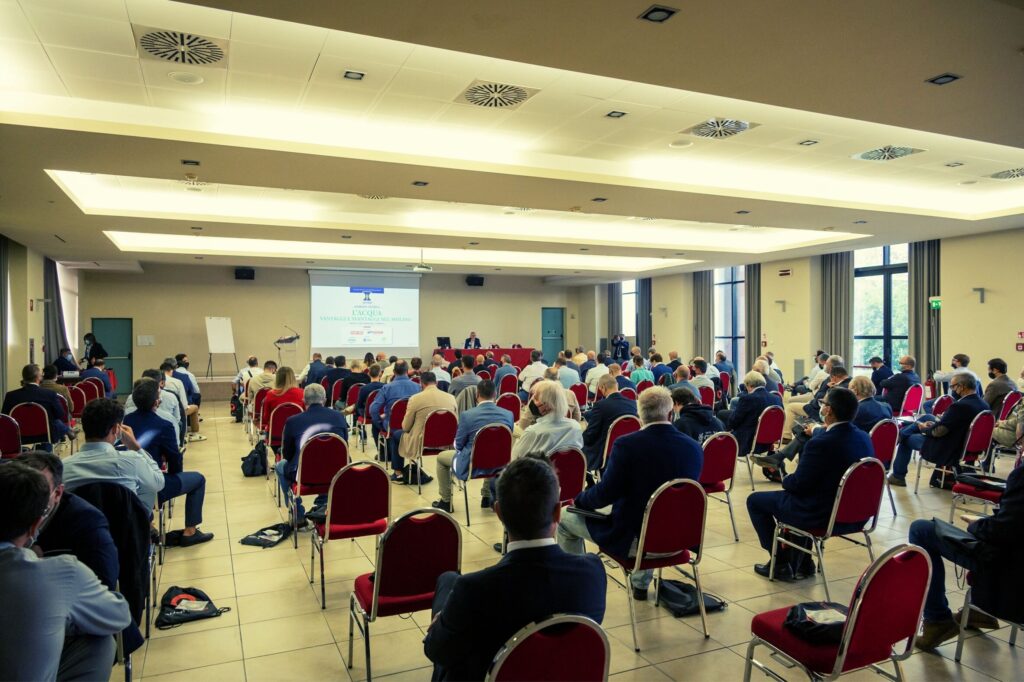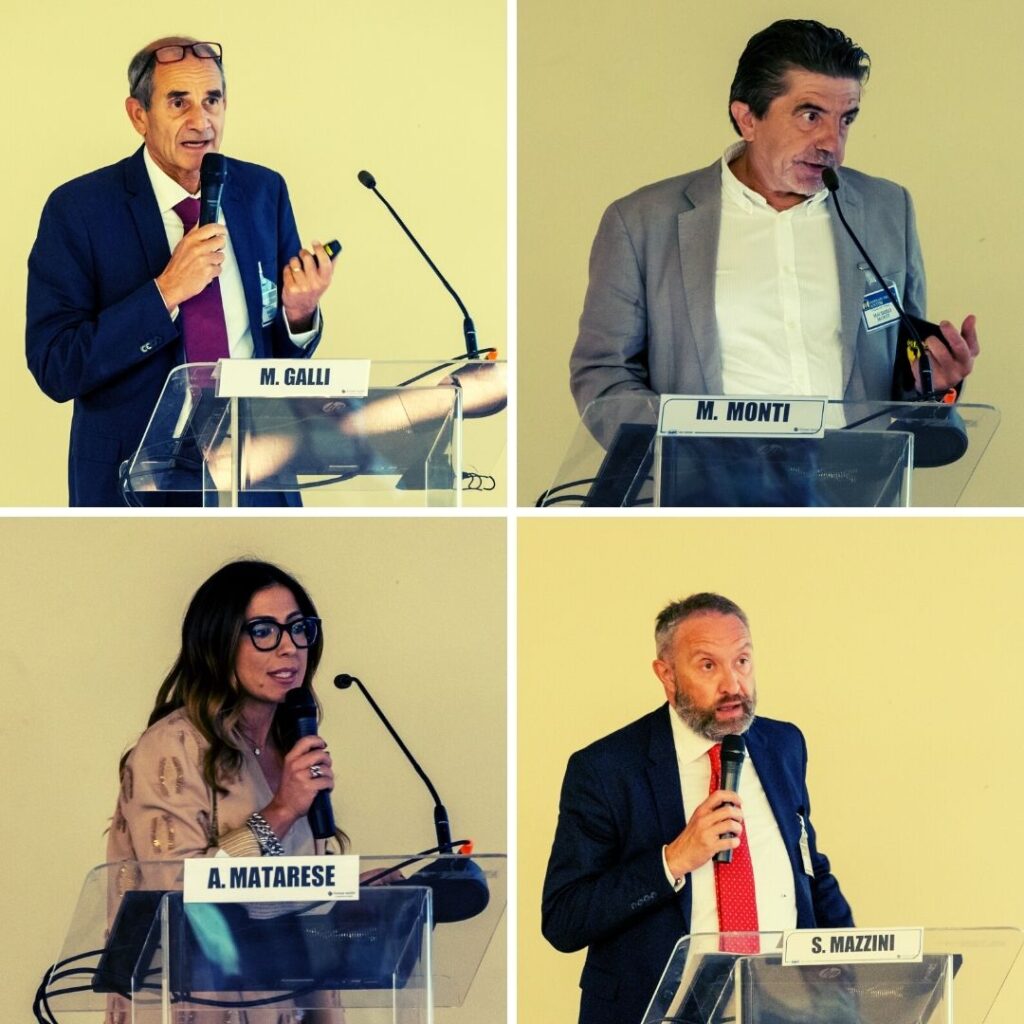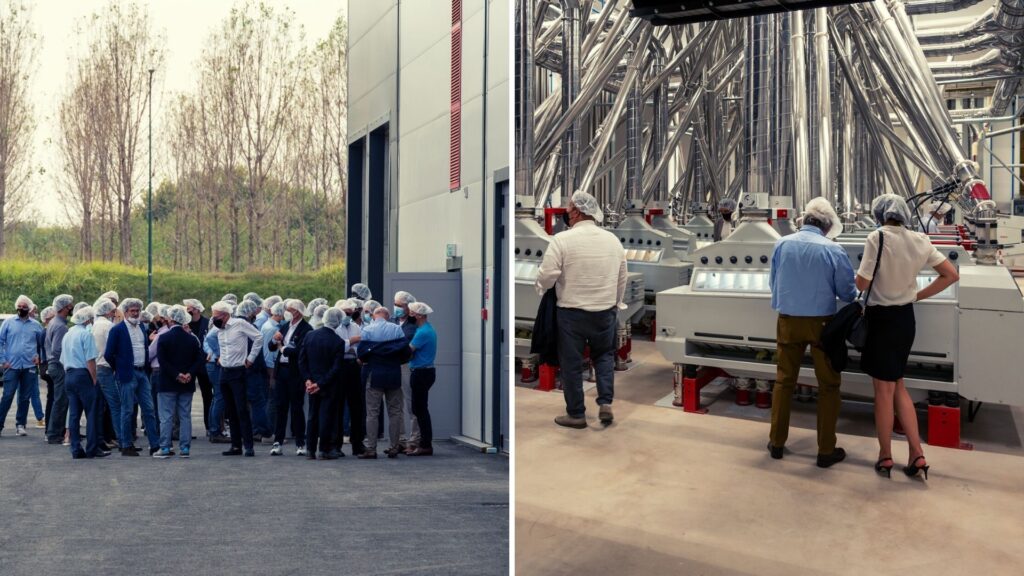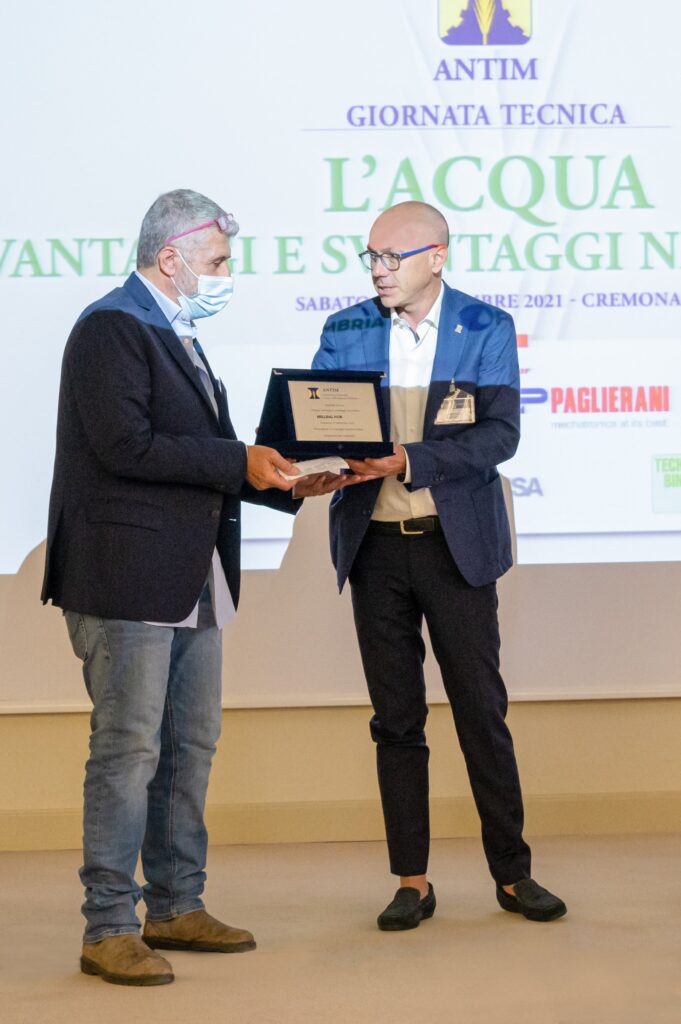What are the criteria to be considered when conditioning grain? How does the amount of water affect the methods for analysing the flour? How should moisture at the milling plant be managed? These are just some of the questions which the speakers at the Antim Technical Day, held in Cremona on the 25th of September, attempted to answer. In the afternoon, a guided tour of the Milling Hub rounded off the day’s events. (On cover: Lorenzo Cavalli, President of ANTIM)
Cremona – Water was the central theme of the Technical Day held by Antim (National Association of Italian Milling Industry Technicians) on the 25th of September in Ocrim’s hometown and attended by a significant number of associates. “Water: pros and cons in the mill” was held in the conference room of the Cremona Palace Hotel, followed by a guided tour of the Milling Hub plant.
After a welcome by Lorenzo Cavalli, Antim president, Marco Galli, the director of the technology department of Ocrim, gave the first talk. The director talked about the various roles that water plays at the mill. The aim is to manage the quantity of water to be added as well as the time taken to mill the grain, since excessive water and longer periods can cause higher loads of bacteria and moulds which affect the finished product. Marco Galli presented some solutions that Ocrim has developed and is developing to address these issues. The floor was then passed to Maurizio Monti, former chairman of Antim and expert in milling techniques, who talked on the subject of “Water absorption, mould in flour, constant hydration and adapted hydration in laboratory analysis“.
During his talk he emphasised how downtime caused by the improper management of water can have serious repercussions for the entire plant. One solution can be proper and consistent cleaning of the components and a focus on the type of flour to be produced. The next speaker was engineer Antonia Matarese, building engineer at PI-SA Srl, who, during her speech entitled “Mills and water: critical issues and solutions“, reviewed coatings for treating the internal and external parts of the conditioning and storage bins, as well as the most suitable sandblasting and hydro-sandblasting methods for overcoming the issues caused by water in milling plants.
The final talk was given by Stefano Mazzini, the Ocrim commercial director, who presented the futuristic Milling Hub plant which people could see on a guided visit in the afternoon. Trade operators were therefore given the opportunity to visit the recent plant owned by Ocrim and Bonifiche Ferraresi.
Also present at the event was Sergio Antolini, Ocrim president, who received a plaque in recognition for the hospitality offered on behalf of the top management of the Milling Hub. The chairman also told the press office of the local newspapers “The second plant is being set up and there will eventually be 10 plants in total. This plant can produce 150 tons per day (…) There are two very important directors: my brother Alberto Antolini, and Federico Vecchioni of Bonifiche Ferraresi. This is their brainchild and all due credit goes to them.”

